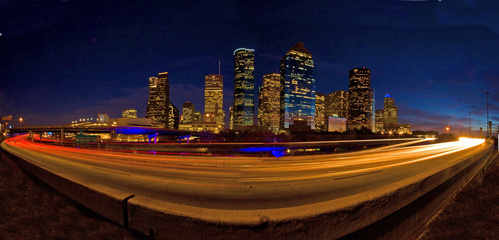 As TCN Journal reported recently, three Texas cities were lower in the federal government’s 2009 ranking of cities with the most energy-efficient commercial buildings than they were on the 2008 list.
As TCN Journal reported recently, three Texas cities were lower in the federal government’s 2009 ranking of cities with the most energy-efficient commercial buildings than they were on the 2008 list.
And all three – Houston, Dallas-Fort Worth and Austin – had smaller numbers of commercial buildings holding the Environmental Protection Agency’s Energy Star rating than they did in 2008. The EPA ranking lists the 25 cities with the most Energy Star buildings.
On Tuesday, an energy efficiency specialist in the Environmental Defense Fund’s Texas office in Austin declared on the group’s Texas Energy Exchange blog that there’s more to the picture than the EPA ranking may suggest.
Energy Star “is a good program with tangible results, but it doesn’t tell the whole story about energy efficiency in buildings,” Kate Robertson wrote. She added:
One reason Texas cities don’t rank higher on the Energy Star list lies in the metric the EPA has chosen. The agency simply lists the number of Energy Star-labeled commercial buildings that a city has. While this is great marketing for the Energy Star brand, there are a lot of important things happening in Texas that this list overlooks.
- Austin Energy’s Green Building Program was one of the first green building programs in the country and was used as an early model for the national Leadership in Energy and Environmental Design (LEED) certification.
- Many cities have adopted more stringent building codes than what the state requires, which are almost ten years old. Cities like San Antonio and Waco have adopted newer codes developed in 2009, and Dallas and Houston have adopted equivalent codes. Addison, Austin, Arlington, Lewisville, McAllen, San Marcos and Sugar Land are also planning to adopt similar codes. League City is even making plans to adopt the codes that are being developed for 2012!
- Texas’ State Energy Conservation Office has initiated a rulemaking process to raise the minimum statewide code to those developed in 2009. Comments on this proposed rule are due by April 26th.
The proposal, filed last month under the authority granted to agency by the state Health and Safety Code, is available as a PDF file here.
Beginning on Jan. 1, 2011, the state’s energy code for residential, commercial and industrial construction (not including single-family residences) use would reflect the energy-efficiency standards of the International Residential Code that was in place on May 1, 2009. The standards would be applied to single-family residential construction in 2012.
The proposal reflects the will of the Legislature, though a legislative mandate to adopt the 2009 standards failed to become law in last year’s session. Such a measure did pass the Senate as part of one complex bill and was part of another bill that passed the House.
– Bill Dawson
